The Apple iPhone 6s and iPhone 6s Plus Review
by Ryan Smith & Joshua Ho on November 2, 2015 8:00 AM EST- Posted in
- Smartphones
- Apple
- Mobile
- SoCs
- iPhone 6s
- iPhone 6s Plus
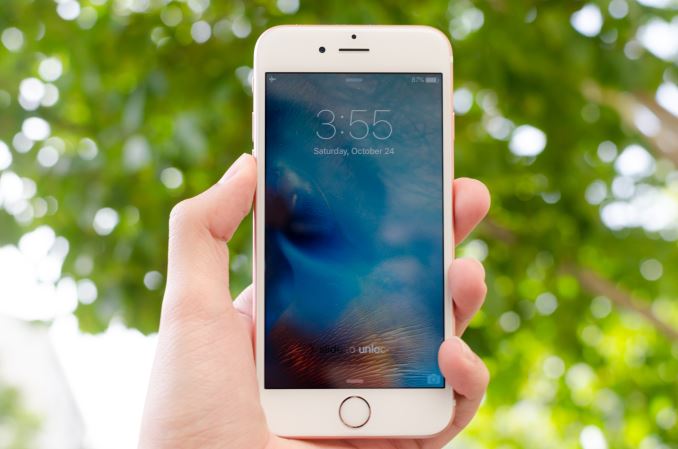
To be perfectly honest, this past year has been remarkably boring in the mobile segment. For whatever reason, phones have either stood still or regressed when it comes to overall quality. There are a few stand-outs that have been worth talking about like the Galaxy S6 lineup and the Galaxy Note5 lineup, but for the most part every phone I’ve reviewed this year has been disappointing in some way. I carry an iPhone 6 to make sure I stay current on changes in iOS, but my primary phone continues to be an HTC One M7. I was hoping to get a new Android phone this year, but so far nothing has really piqued my interest.
Part of the problem this year is that performance and battery life haven't been the most impressive in a lot of cases. By this point, it's really not a surprise that Snapdragon 810 doesn't deliver as much performance as it needs to for the amount of power that it draws. However, even independent of SoC it seems a lot of OEMs haven't really pushed the bar in design or attention to detail. Some phones have cameras with almost unacceptable post-processing quality, others continue to have poorly calibrated displays, and the ones that have none of those have problems with software experience or something else. In general, no Android phone I've seen this year really delivers everything that I'd want in a single package. There are phones that are clearly better than others, but nothing that rises to the level that I'd want before putting down a few hundred dollars.
In light of this lack of competition in the market, it's arguable that Apple is facing less competition than before. The iPhone 6s would continue to sell quite strongly even if this year's refresh was relatively minor as they would still end up quite strong competitively as they would be able to capitalize on momentum from previous years. If you were unfamiliar with the iPhone 6s and Apple's iPhone launch cycle, at first you might be convinced that Apple has done exactly that. However, in general the iPhone release cycle is such that industrial design is constant for two years at a time, so every other year sees a design refresh. When the design isn't refreshed, the phone often carries significant internal changes. In the past, the iPhone 3GS brought a better SoC, a faster modem, and a better camera. The iPhone 4S brought a new SoC, camera, and Siri. The iPhone 5s brought a new SoC, camera, and TouchID. In general, we can see a pretty clear pattern of evolution but it seems that with the 5s the refresh launches have generally brought new features as it has become insufficient to simply ship a faster SoC and possibly a modem and camera refresh to justify a new smartphone.
In the interest of diving into these changes at a high level, we can start with our usual spec table, which can give an idea for whether there's anything immediately worth talking about.
| Apple iPhone 6s and 6s Plus | ||||
| Apple iPhone 6 | Apple iPhone 6 Plus | Apple iPhone 6s | Apple iPhone 6s Plus | |
| SoC | Apple A8 2 x 1.3GHz Apple Typhoon |
Apple A9 2 x 1.85GHz Apple Twister |
||
| GPU | PowerVR GX6450 | PowerVR GT7600 | ||
| RAM | 1GB LPDDR3 | 2GB LPDDR4 | ||
| Display | 4.7-inch 1334 x 750 IPS LCD | 5.5-inch 1920 x 1080 IPS LCD | 4.7-inch 1334 x 750 IPS LCD | 5.5-inch 1920 x 1080 IPS LCD |
| Size / Mass | 138.1 x 67 x 6.9 mm, 129 grams | 158.1 x 77.8 x 7.1 mm, 172 grams | 138.3 x 67.1 x 7.1 mm, 143 grams | 158.2 x 77.9 x 7.3mm, 192 grams |
| Camera | Rear Facing 8MP iSight with 1.5µm pixels + True Tone Flash Front Facing 1.2MP F/2.2 |
Rear Facing 8MP iSight with 1.5µm pixels + True Tone Flash + OIS Front Facing 1.2MP F/2.2 |
Rear Facing 12MP iSight with 1.22µm pixels + True Tone Flash Front Facing 5MP F/2.2 + Retina Flash |
Rear Facing 12MP iSight with 1.22µm pixels + True Tone Flash + OIS Front Facing 5MP F/2.2 + Retina Flash |
| Storage | 16GB/64GB/128GB | |||
| I/O | Apple Lightning connector, 3.5mm headset | |||
| WiFi | 2.4/5GHz 1x1 802.11a/b/g/n/ac, BT 4.2, NFC | 2.4/5GHz 2x2 802.11a/b/g/n/ac, BT 4.2, NFC | ||
| Price | $549 (16GB) | $649 (16GB) | $649/749/849 16/64/128GB | $749/849/949 16/64/128GB |
At a high level, there are already a number of changes that we can talk about. The SoC is new and improved for this year with improved performance and power. The rear camera now supports 4K video recording and has higher resolution photos than what we’ve seen before. The front-facing camera is now higher resolution as well. The iPhone 6s finally has 2 GB of RAM, with improved power and bandwidth along with improved multi-tasking that comes from additional RAM. The modem now uses less power and also capable of higher throughput, as is the WiFi chipset.
Outside of these spec sheet changes, Apple has implemented a number of new features. One of the major highlights is 3D Touch, in which the display is force-sensitive and allows for new user interface actions based upon the amount of pressure applied to a point on the display. The front-facing camera now uses the display as an LED flash of sorts in low light, which measures ambient light in order to determine what white balance to use along with a backlight driver that temporarily spikes brightness to up to three times the normal maximum brightness for effective lighting. Both cameras now have Live Photos, which records a 1.5 second segment of video before and after the photo taken to capture a moment rather than an instant without the complication that comes with videos.
Design
Of course, before we can get into all of these changes we can start by focusing on the most immediate change, which is the design. For those that are unfamiliar with Apple’s iPhone launch cycle, the S launch cycle usually retains the same industrial design as the previous iPhone. As a result, the changes here are rather scarce. Those interested in a detailed description of the design should refer back to the iPhone 6 review.
However, there have been changes to the look and feel of the iPhone 6s lineup. The first, and most immediate change is the addition of a new color that Apple calls Rose Gold. This is much redder in tone than what we saw with the Apple Watch Edition, to the extent that it looks more like a light pink with a gold tinge rather than gold with a light pink tinge. I’m probably the last person in the world to consult on what color looks best, but I don’t really see anything wrong with this color.
Outside of color, the iPhone 6s lineup has changed in a noticeable way when it comes to materials and in-hand feel. The aluminum back cover is now 7000-series, which increases rigidity with the addition of zinc which increases yield strength, or the pressure needed to permanently deform the material. It’s likely that relative to the iPhone 6, ultimate tensile strength has also increased, although given that tensile strength is a test of how well the metal avoids breaking apart it’s unlikely that this property matters all that much. If you're actually reaching the ultimate tensile strength of a phone's back cover, you've probably already broken everything else in the phone.
With the use of this new aluminum back cover, the phone should be less susceptible to bending under extreme forces. I never had a problem with this when testing the iPhone 6 last year, but it shouldn’t be a problem now. Oddly enough, I did notice that the iPhone 6s is easier to grip than the iPhone 6, but the difference isn’t big enough that I would avoid using a case.
The other change is a new type of cover glass on the display, which uses a dual ion exchange process to make it tougher. According to Apple, this glass is the most durable of any in a smartphone today. A simple search with Google gives reason to suggest that Corning is making this glass as Corning holds a patent for this process. While we have no idea what Apple’s process is, the same dual ion exchange process occurs, which creates two distinct stressed layers that improves impact strength relative to a standard single ion exchange that is seen in Gorilla Glass.
Other than this, the design of the iPhone 6s remains quite good. The rounded edges and slightly curved glass help with in-hand comfort and things like the placement of the 3.5mm headphone jack on the bottom is a smart idea as the headphone jack is easily accessible when the phone is inside a pocket. We can talk about how the camera hump means that the phone doesn't rest completely flat on a table, but given that the phone has gotten about 15 grams heavier in both the iPhone 6s and 6s Plus I suspect it makes sense for Apple to avoid making the phone any thicker with extra battery than they have now. I would rather see thinner lines to insulate antennas here, but I suspect that there is some RF requirement that makes it difficult for this to happen.
Compared to something like the HTC One M9 which also has an aluminum unibody design Apple is far ahead in terms of overall ergonomics and cohesiveness. Relative to the Samsung Galaxy S6 I think the iPhone 6s is noticeably more comfortable due to the more rounded edges, but the iPhone 6s Plus and Galaxy Note 5 are pretty close in overall ergonomics. I do wish Apple would go to a front-ported speaker for the iPhone, but it seems that this is unlikely to happen due to the home button and bezel constraints.


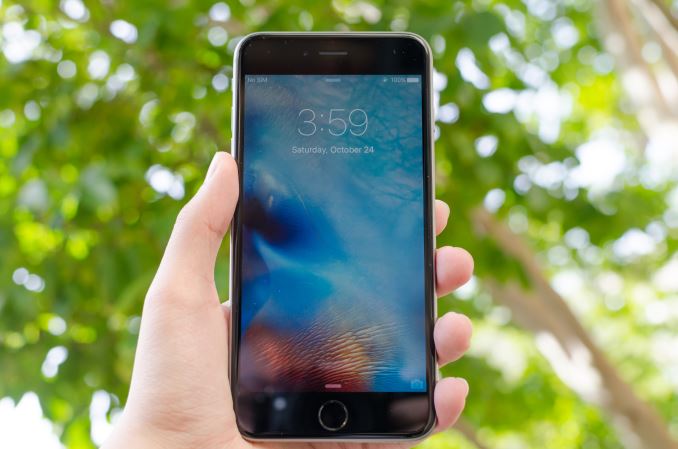
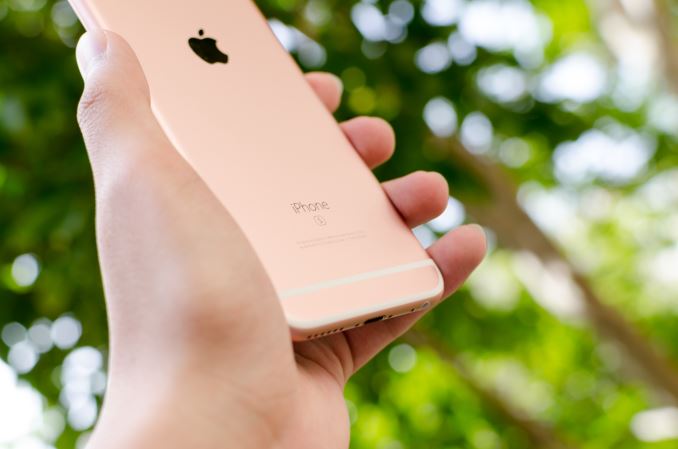
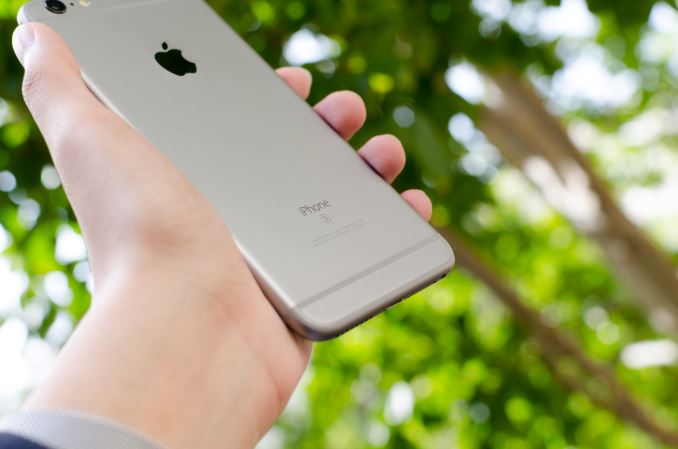
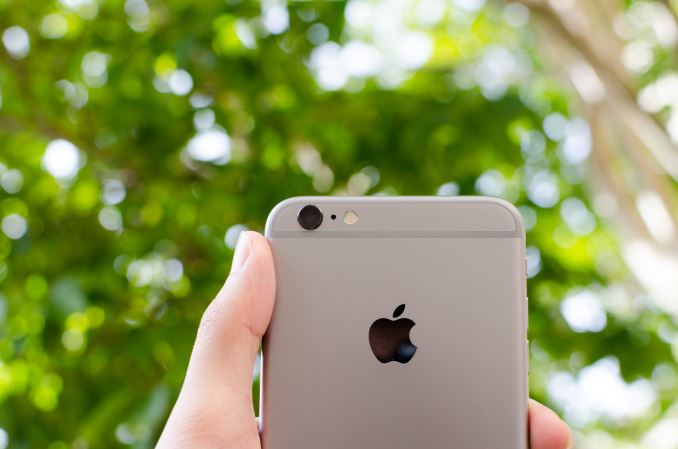
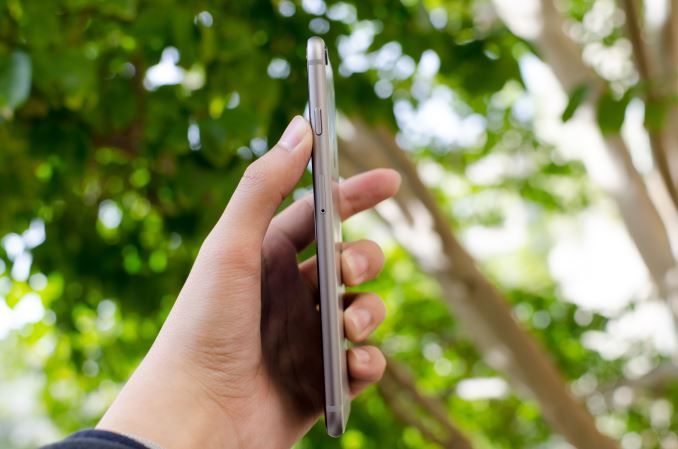
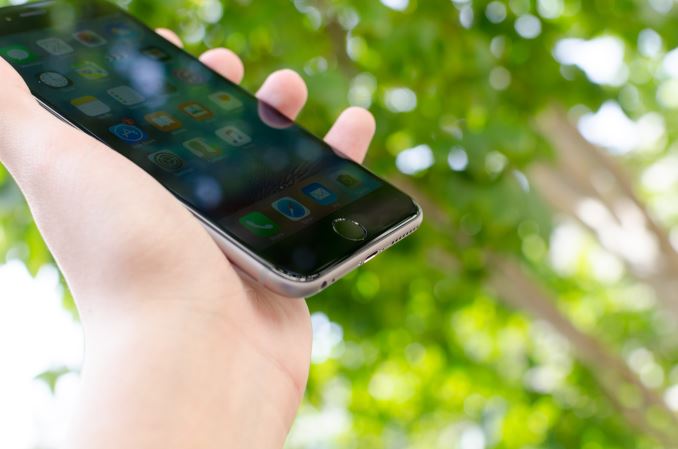
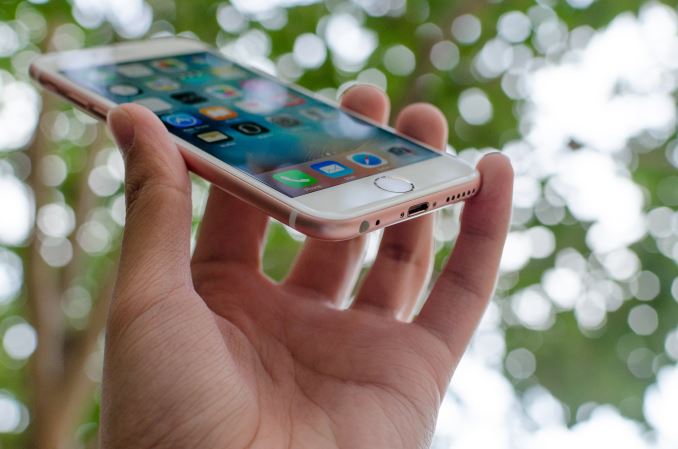








531 Comments
View All Comments
TitaniK - Friday, November 13, 2015 - link
I used to be so pro android and have tried all main phones on the market; Samsung 3&4, note3,4, htc one m7, nexus 4. I need my phone constantly mainly for business as well as pleasure and at the end, i surrendered to Apple product; so reliable, fast and just clean. It's just a well tuned machine. I compare it this way; android is the NASCAR of mobile devices where Apple is Formula 1. Cars go very fast in both organizations but the Formula 1 machines are simply finer tuned and polished machines.10basetom - Sunday, November 8, 2015 - link
Even though my last two phones have been Androids, I would have to agree with the reviewer's assessment that Android phones have been, more or less, a zero sum game. You can call me jaded, but there's not a single Android phone in the past year that has gotten me truly excited, maybe with the exception of potentially cheaper (relative to YotaPhone 2) dual screen phones coming out of China that would change how you use a phone on a daily basis. PDAF, laser autofocus, and RAW support are nice specs to have for a limited group of photography aficionados, but I don't consider them real innovation in the overall user experience department. Most consumers (i.e., non-geeks) who use phones to take everyday photos will not notice -- or even care -- whether their phone has PDAF or not; and for people who want to take frameable photos, they would probably do so with a tripod and DLSR rather than a mobile phone. Besides, the cameras in the iPhone 6s' are nothing to laugh at.When I think of progress in mobile OS usability, it would have to be something that gives the end user more pleasure in using it, or increase their productivity in a measurable way (e.g., less time in doing something, fewer taps). Maybe I've just been using Android for too long, but there is nothing in Lollipop or what I've seen of Marshmallow that makes me stop and silently shout "damn, that is impressive!". Sure, the interface is a little more streamlined with enhanced jazzy animations (that I turn off anyway to improve performance), and some new iterative features sprinkled here and there, but nothing revolutionary. It's unfortunate that most Android phone manufacturers build a custom skin on top that more often than not makes the phone less usable and more buggy, and also more confusing when you move from one Android phone to the next.
The WinCE-based Neno OS that introduced a 100% swipable interface and weaned people off the stylus two years before the original iPhone -- that's way into revolutionary territory. The pulley menu system in Sailfish OS -- now that's something refreshing. It may not be everybody's cup of tea, but at least they are trying something different, and when you do get used to it, it really does improve one-handed usability. The 3D Touch interface in the new iPhones? Now that's bordering on revolutionary. Again, it may not seem apparent when you first use it, but after living with it for an extended period of time until it becomes habit, you would be hard-pressed to go back to a mobile phone without a pressure-sensitive touch layer. The exciting thing is that we are just scratching the surface of what 3D Touch can bring; and the module could be made thinner and lighter so that future iPhones won't get such a large weight bump.
Other than the superior A9 SoC which has already been widely discussed, the other big thing for me that Android phones have been dropping the ball on is storage architecture. Whereas most Android phones are still advertising eMMC 5.0 storage solutions, the iPhone 6s' have moved way beyond that. Samsung's move to UFS 2.0 is a step in the right direction, and I hope all other Android phone manufacturers will follow suit soon.
dusszz - Monday, November 30, 2015 - link
I've been a long time android user seriously thinking of switching to iphone. Android OS in general is not meant for high end devices because prior to nexus 6p, android is designed for nexus phone which is not a high end devices. The high end iteration of android as in galaxy s6/note 5 with skins feel fragmented and does not really in line with what google intended (material design). Sure they add features with that but it felt like they (high end oem) trying too hard to compete. I always feel the best android devices must come from nexus line but then it does not quite there at least just yet. Every innovation in android OS always feel like it is in beta because the implementation more for marketing rather than useful. For example, nexus 5 has OIS since 2013 but does not feel it has advantage over other phone that has EIS. Furthermore, decision google made to ditch OIS (nexus 6p/5x) further clarify it. I personally never have android phone for more than a year without feeling outdated in term of hardware. So if you think you buy $500 android phone thinking it can compete with iphone, its going to be disappointing. Android is at its best being a midranger.hans_ober - Monday, November 2, 2015 - link
at last!vFunct - Monday, November 2, 2015 - link
I wish he took proper photo tests.Tip: when testing cameras, do make sure to take photos of people. Don't take photos of brick walls.
You're going to find that most people take photos of people with their phones - at parties, selfies, etc..
A good camera test always includes people shots.
vFunct - Monday, November 2, 2015 - link
Basically you're looking for skin-tone reproduction quality.Klug4Pres - Monday, November 2, 2015 - link
I wonder if next year the Home button will disappear, which would help a lot with the bezeltastic design.zeeBomb - Monday, November 2, 2015 - link
That username...lol.I dunno man, the home button is the staple of iPhone Design since the very original. Might be pretty controversial if you'd ask me.
KoolAidMan1 - Tuesday, November 3, 2015 - link
The fingerprint reader is another big reason. If they can get it to be as fast and accurate as it is right now while reducing home button size then I can see them reducing the bottom bezel.Otherwise you're looking at making their fingerprint reader as flaky and undependable as Samsung or everyone else's
Tetracycloide - Tuesday, November 3, 2015 - link
The nexus 5x has been super solid.